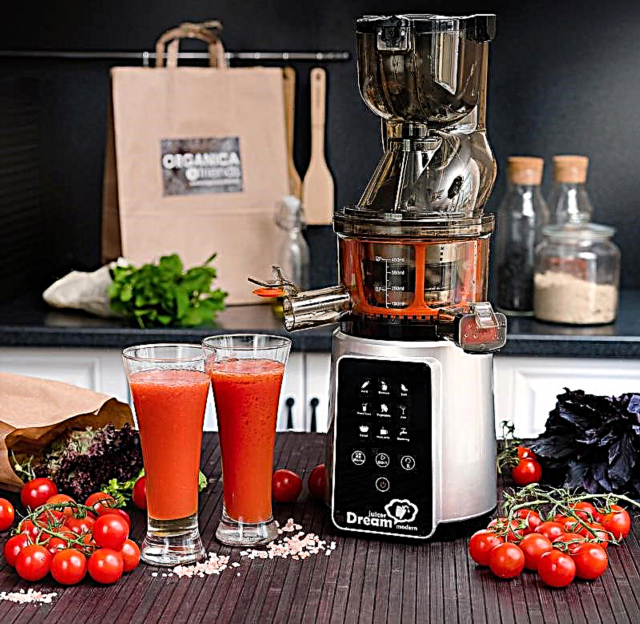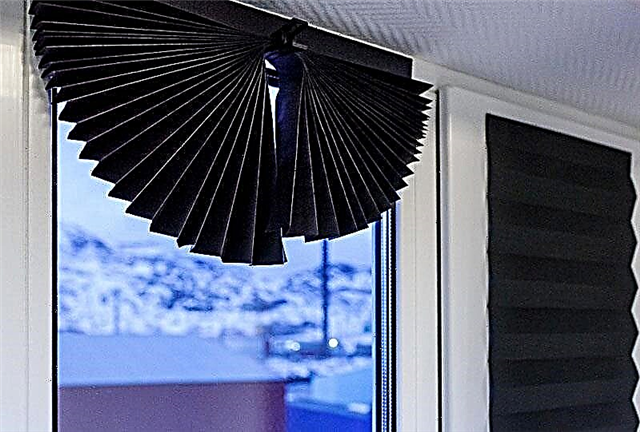We are increasingly confronted with climatic phenomena such as unusually high heat or severe frost. Household appliances, especially refrigeration, in these cases more often breaks down. In order for the refrigerator or freezer to work flawlessly and efficiently preserve your food reserves, when choosing it, pay attention to such a parameter as the climate class, which indicates the manufacturer's ambient temperature conditions for the operation of this model. If, in the event of a breakdown, it turns out that the refrigerator was used at inappropriate temperature conditions, warranty repairs may be refused.
Before choosing a refrigerator or freezer, it is worth deciding on the necessary climate class.
There are 4 main climatic classes:
- N is normal. In this case, the room temperature can vary from +16 to + 32 ° C.
- SN - subnormal. Temperature range from +10 to + 32 ° С.
- ST - subtropical (subtropical), for a tropical climate with high relative humidity. Temperature range from +18 to + 38 ° С.
- T - tropical (tropical), for a dry tropical climate. Temperature range from +18 to + 43 ° С.
Traditionally, refrigerators with climatic classes N and SN are most widely represented on the Russian market. Due to the frequent increase in summer temperature in our latitudes to + 35 ° C and above, models with a double climate class have become increasingly popular. They are designed to work with a wider temperature range.
- N-ST - climate class designed for normal operation of the device at temperatures from +16 to + 38 ° C.
- N-T - climate class from +16 to + 43 ° C.
- SN-ST - climate class from +10 to + 38 ° C.
- SN-T is the most versatile class. The equipment should work without problems in the temperature range from +10 to + 43 ° C.
The range of refrigerators and freezers of such well-known brands as Liebherr, Electrolux, Bosch, LG, Miele, Sharp, Samsung, Atlant has many models of refrigerators and freezers that have a universal climate class SN-T. For example, Liebherr offers users Kes 4270, KBgb 3864, KB 3660 and many others refrigerators for placement in rooms with temperatures from +10 to +43 degrees. In the model range of refrigeration equipment manufactured under the Whirlpool brand, there are two-chamber refrigerators with the N-T climate class (from +16 to +43 degrees). Such models of refrigerators of this brand as WBC 3534 A + NFCX, WTC 3746 A + NFCX have a high energy class A +.
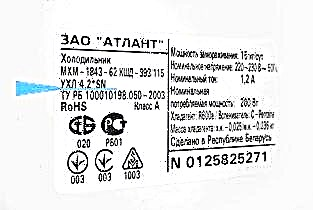
The climate class designations are the same for refrigerators and freezers of all manufacturers, regardless of the country of manufacture. Climate class information is indicated on a sticker located inside the refrigerator compartment. On the same sticker you will see information about the energy efficiency class of the device, the refrigerant used, and the serial number of the device.
Before delivering goods for sale, manufacturers conduct tests of refrigeration equipment in conditions close to normal domestic use. Devices sold on the territory of Russia must comply with the requirements of approved technical regulations or previously approved GOSTs. For example, GOST 15150-69. "Execution for various climatic regions."
Normal climatic performance on domestic refrigeration appliances is denoted by the letters of the Russian alphabet UHL (temperate cold climate), which corresponds to the 2 classes SN and N. And tropical domestic refrigeration appliances of domestic production are indicated by the letter O of the Russian alphabet (general climatic performance) - ST and T.
An indication of the climatic class of the device is not a ploy of a marketer who wants to sell a product to a wide range of customers. Refrigerators and freezers with different climatic classes differ significantly from each other in a constructive solution. To ensure the reliability and the declared quality of the apparatus, stable maintenance of temperatures inside the refrigerator and freezer, an appropriate insulation layer is performed. In devices of classes ST and T, designed for operation in hot climates, the insulation layer should be larger.
Refrigeration equipment used at high ambient temperatures require more powerful compressors and larger condensers, equipped with additional fans to increase heat transfer efficiency. Examples of devices designed for operation at elevated room temperatures are Panasonic NR-B 591 BR-C4, Whirlpool ARC 4208 IX two-chamber refrigerators and Sharp SJ PV 50 HG and SJ PV 50 HW multi-chamber refrigerators. These devices have a climatic class T and are intended for operation in a tropical climate, where the temperature does not fall below +16 degrees, and the maximum for the room is set within +43 degrees.
The correct selection of the climatic class of the refrigerator directly affects the quality of work, the durability of the device and its energy efficiency. Of course, buying a refrigerator or freezer, designed to work at high ambient temperatures, you can be sure that it will work perfectly even at normal room temperatures. However, one should take into account the fact that such refrigerators are more energy-consuming and more expensive due to the more complex design. It is better to spend time and purchase a device that exactly matches the conditions of your apartment: in this way, you will save natural resources, family budget and your own nerves.
What does climate class mean, what is it for?
The refrigerator of any model (Atlant, Bosch, Samsung) is used under certain conditions. So that it does not break, you need to choose in accordance with the climate class: the temperature range in which it will work without failures.
Important! Look at the operating temperature of the refrigerator indicated by the manufacturer. If the equipment fails due to non-compliance with the recommendations, you will be denied a free repair under warranty.
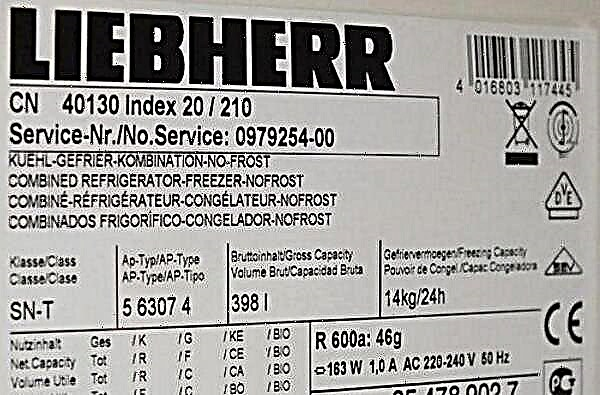
No one will take into account that you did not know the symbol designation on the refrigerator, and that the store did not help you with the right choice. Therefore, carefully read the classes before you go shopping.
What is the climate class
The weather has changed dramatically lately: in summer it is abnormally hot and in winter too cold. In order for the equipment to withstand these temperature differences, it is important to consider the range in which it can be operated.
Which climate class is better? Their designations and decoding:
Normal - N. The temperature in the room can be from +16 to +32 degrees. The most versatile and sought after in Russia, the most energy efficient models. Installation of the refrigerator N in the southern regions, where the thermometer is significantly higher than + 32 ° C, should be carried out only in rooms with air conditioning. In winter, the rooms should be well heated, otherwise the equipment will not turn on. The best models are represented by the brands LG, Indesit.
Subnormal - SN The range is from +10 to +32 degrees. Suitable for placement in rooms with low temperature: corridors, basements, loggias, utility room. Even if the value drops below comfortable, the equipment will not stop working. The best representatives are Liebherr, Bosch, Samsung.
Subtropical (subtropical) - ST. From +18 to + 38 ° С. Designed for installation in hot and humid climates. Such options are offered by the brands Samsung, Milli, and Electrolux.
Tropical - T. From +18 to +43 degrees. They are used in dry tropical regions with very hot climates. Suitable models are Samsung and Virpul.
The last two options are practically not delivered to the territory of Russia, since they are not too demanded in our conditions.
Due to the abnormal temperature rise, manufacturers began to produce refrigerated cabinets with double labeling. They have a sufficiently large range of permissible temperatures:
- N-ST - from +16 to +38 degrees.
- N-T - from +16 to +43 degrees.
- SN-ST - from +10 to +38 degrees.
- SN-T - from +10 to +43 degrees.

Which class to give preference
The most popular is the equipment with classes N and SN; their temperature is most suitable for our latitudes. In the south, units often labeled ST and T.
"Multiclass" refrigerators are considered universal, because they can be installed in various regions. This is possible thanks to the double casing. This technique can be found in various brands:
- Whirlpool - WBC 3534 A + NFCX, WTC 3746 A + NFCX,
- Indesit - NBS 18, BIAA,
- Liebherr - Kes 4270, KBgb 3864, KB 3660.
Brands Electrolux, Bosch, LG, Miele, Sharp, Samsung, Atlant produce not only refrigerators, but also freezers.
However, here it is not without drawbacks:
- Price. Universal units are much more expensive than conventional ones.
- Increased energy consumption, condensation.
Refrigerators manufactured in Russia may differ in the marking: UHL, which means moderately cold, or O - general climate.
When choosing equipment for the climate class, consider the features of the room. Refrigerators designed for installation in heated rooms may fail in the basement or hallway.
Important! Correctly selected model for the temperature range will help save energy. And vice versa: if there is an error, the temperature difference in the room and inside the chamber will be large, which will lead to increased motor operation and the consumption of electricity.

Climate class indicators are the same for all manufacturers of refrigerators and freezers, regardless of the country of manufacture. Designations are indicated in documents (instructions) or on a sticker that is placed outside or inside the case.
The difference between different climate classes
Models may have design differences:
- Compressor power. In devices designed for installation in hot regions, the compressor capacity is greater, because it has to constantly cool the products in the chamber.
- Materials For humid climates, special materials and coatings are used to protect the housing from moisture and mold.
- Thermal insulation is greater in those refrigerated cabinets where the thermometer mark is much higher.
Be careful when buying equipment. Do not rush and carefully check everything, look at the symbols and recommendations of the manufacturer in the tables.
Climatic class of the refrigerator. What it is?
Or, in another way, the temperature class is a set of unit parameters at which it stably functions without malfunctioning, overcooling and overheating. Why is this condition necessary for execution when choosing a refrigeration unit? The unit simply does not withstand the temperature difference, the compressor starts to malfunction, the liquids get stuck, and the device stops functioning. This is because each temperature class requires its own environmental conditions.
Types of temperature classes
Due to changing temperature conditions in various parts of the world, it was necessary to act. What did the manufacturers of refrigeration units. They created a set of values for each region, taking into account atmospheric requirements. There are 4 main types:
- A typeN(normal). Most often found in Russia. Universal versions of units that combine efficient energy consumption and reasonable prices. The temperature diverges in the range from +15 to +32 degrees. In the summer, with a sharp increase in the thermometer, air conditioners are needed. In winter, they may not turn on if it is too cold.
- A typeSN(subnormal). The best choice for installation in warehouses, pantries, on basement floors, in poorly heated corridors. Comfortable conditions range from +9 to +32 degrees. A refrigerator of this kind will not be prevented by a temperature value below the stable operation mark; it will function without problems.
- A typeST(subtropical). Electrical components are protected against humidity and temperature spikes. The line prevents mold and mildew due to excessively humid climate. Recommended conditions - from +18 to +38 degrees. Due to the emphasis on a hot and humid climate, refrigerators cannot withstand temperature drops below the set value.
- A typeT(tropical). The most resistant to high temperature class. Found wide application in tropical parts of the world. Conditions for stable operation: from +18 to 43 degrees.
In Russia, aggregates may have other designations, for example, S and SN are given the abbreviation “UHL”. It stands for "moderately cold." T and ST are combined under the letter "O", which means "general climatic". But these are still the same versions of familiar models.
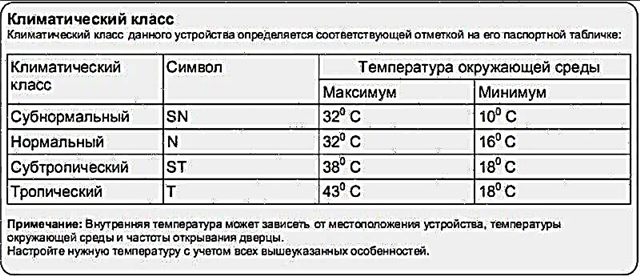
Multiclass Refrigerators
Some versions of refrigerators belong to several classes at once. They have an increased energy consumption and are considered more expensive than conventional models, but they have several advantages: they are endowed with heat-insulating casing of the case, due to the large temperature difference - from +10 to + 43 ° C, additional fans with microprocessor rotation control. There are also 4 main markings:
- N–ST. Temperature balance in the range from +16 to + 38 ° C,
- categoryN–T. Allows heat of premises from +16 to + 43 ° C,
- SN–ST. Almost universal class, installed at + 10 ... + 38 ° C,
- SN–T. The golden mean in the home appliance market. It functions at + 10 ... + 43 ° C.
How do you know which climate class your refrigerator belongs to?
 "width =" 1168 "height =" 401 "srcset =" https://your-holodilnik.ru/wp-content/uploads/2019/12/climatic-class-fridge-1.jpg 1168w, https: // vash -holodilnik.ru/wp-content/uploads/2019/12/climatic-class-cooling-1-300x103.jpg 300w, https://your-holodilnik.ru/wp-content/uploads/2019/12/climatic- class-fridge-1-1024x352.jpg 1024w, https://your-holodilnik.ru/wp-content/uploads/2019/12/climate-class-fridge--1-768x264.jpg 768w "sizes =" (max- width: 1168px) 100vw, 1168px "/>
"width =" 1168 "height =" 401 "srcset =" https://your-holodilnik.ru/wp-content/uploads/2019/12/climatic-class-fridge-1.jpg 1168w, https: // vash -holodilnik.ru/wp-content/uploads/2019/12/climatic-class-cooling-1-300x103.jpg 300w, https://your-holodilnik.ru/wp-content/uploads/2019/12/climatic- class-fridge-1-1024x352.jpg 1024w, https://your-holodilnik.ru/wp-content/uploads/2019/12/climate-class-fridge--1-768x264.jpg 768w "sizes =" (max- width: 1168px) 100vw, 1168px "/>
Often we have the question: "How to determine the class of the purchased unit?". You can view this data on the device itself. They are depicted in a special frame that is mounted on the refrigerator case, unit passport or interior space. If you came to the store for a long-awaited purchase, then do not forget to check whether the inscriptions in the book and on the plate match.
Conclusion
Summarize the above and give a list of popular manufacturers of specific classes of refrigeration units:
- Class Refrigerators N(normal) are popular thanks to the company LG, which produces many types of household appliances. It is one of the world leaders in the market in this area.
Not inferior to the position of the Italian engineering company Indesitalso specializing in the manufacture of household appliances. - Class SN(subnormal). Market Leaders: German Engineering Company Liebherr provides a variety of refrigeration units, a group of companies Bosch engaged in the supply of household appliances in various parts of the world. Products of this brand can be found in almost any city, a South Korean network of firms Samsung.
- Type refrigerators ST(subtropical). Most popular brands: German company Miele - a leader in the market of premium class household appliances. It is also worth noting Samsung, Swedish company Electrolux.
- Refrigerators T(tropical) class. The best models are represented by firms: American manufacturing company WhirlpoolCorporation, Samsung.
Whatever brand you choose, always pay attention to the climate class and the place where the unit will be installed.
Leave behind the design, color, number of freezers and more, because good and long work is much more important. If you follow all the above rules for choosing a unit, then it will function without problems for many years. After all, it is much better to make the right choice once and, for example, pay a little more for high-quality equipment than to repair or replace every six months.
Climatic classes of refrigeration equipment
Over time, we have to deal with weather phenomena that are not entirely characteristic of the usual habitat. So, for example, in the summer there is simply incredible heat, and winters are so severe and windy that no heating can save. All this indirectly affects the normal operation of household appliances, and refrigerators, in particular, which are simply starting to break down.
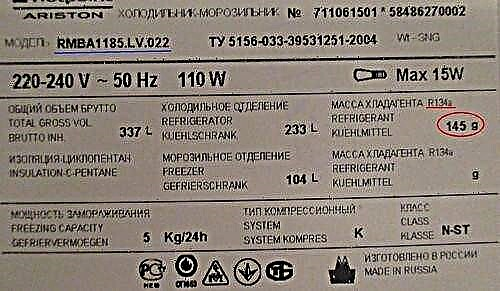
Based on the existing problem, manufacturers of such units began to equip their product with additional user parameters, one of which was the climate class. It indicates environmental conditions in which the refrigerator will store food in a fresh and usable condition without fail. If you ignore this parameter and use the device contrary to the recommendations of the manufacturer, then you can’t rely on compliance with the contract regarding warranty and after-sales service.
What are the climatic classes of refrigerators
The standard has four climate classes for refrigeration equipment, each of which has its own marking and temperature ranges:
- N– normal
- SN - subnormal
- ST - subtropical,
- T is tropical.
Due to changes in temperature conditions, many companies began to produce refrigerators with double labeling:
- N-ST - a combination of characteristics of normal and subtropical climate classes,
- N-T - normal + tropical,
- SN-ST - subnormal + subtropical,
- SN-T - subnormal + tropical.
Such mixed models cover a much wider temperature range, which makes them more versatile.

Characteristics of climate classes
The table shows the standard climate classes, their brief characteristics and popular manufacturers of such models.
| Climate class name | Permissible temperature range | Specifications | Manufacturers |
| N (normal) | + 16 ... + 32 ° С | The universal view, which is most often installed in residential buildings. Suitable for temperate climates without long cold and hot periods. It features optimal energy consumption and affordable price. | Nord, Indesit, LG |
| SN (subnormal) | + 10 ... + 32 ° С | The equipment is suitable for rooms with unstable heating (cold corridors, storage rooms). Most commonly used in small industries | Samsung, Bosch |
| ST (subtropical) | + 18 ... + 38 ° С | The technique is designed for hot climates with high humidity. Devices are steady against seasonal temperature jumps, but are not suitable for work in cold rooms. | Samsung, Sharp, Electrolux |
| T (tropical) | + 18 ... + 43 ° С | Models are designed for regions with very hot and dry climates. Cannot be placed in rooms with high humidity. They are characterized by high energy consumption, a large layer of thermal insulation and high cost. | Samsung, Panasonic, Whirpool |

Refrigerators with mixed climate classes have the following characteristics:
- N-ST - the operating temperature of such devices is + 16 ... + 38 ° C,
- N-T - adapted for operation at temperature indicators + 16 ... + 43 ° С,
- SN-ST - operates in the temperature range + 10 ... + 38 ° С,
- SN-T is the most versatile equipment that can operate at + 10 ... + 43 ° C.
Despite the fact that such equipment is more expensive and consumes significantly more electricity, it is becoming increasingly popular. This is due to frequent weather changes (abnormal heat, record cold), late switching on and early turning off the heating.
Models of refrigerators with mixed classes are presented by leading manufacturers: Samsung, Bosch, Liebherr, Whirpool.
What is the difference between refrigerators with different climate classes

Depending on the climate class, each model of refrigeration equipment has its own design features:
- Compressor power. Devices that are used in hot climates are equipped with high power compressors. This is due to the need for constant cooling of products in the compartments and freezer of the refrigerator. For tropical and subtropical classes, compressors with the highest performance are used.
- Thermal insulation. In technology for hot climates, the thermal insulation layer is larger in comparison with devices used in cooler conditions.
- Power consumption. All other things being equal, units operating in a wide temperature range consume much more energy.
- Materials If the models are designed for use in rooms with high temperature and humidity, they are made of special materials with a coating that protects the housing from moisture and mold.
- Space for heat transfer. Equipment designed to work in the heat is equipped with a larger area for heat transfer (condensers and evaporators).
The assembly of models with the relevant parts is regulated by the IEC 62552 standard.
How to choose the right climate refrigerator?
Choosing a refrigerator is not as easy as it sounds. It should be approached with all seriousness, since no one wants to purchase household appliances that will break in the near future.
When buying a refrigerator, you should pay attention to many factors:
Manufacturer. Most buyers choose household appliances from the manufacturer, to which some trust has already been formed
However, many in this case pay attention to reviews of other users, as they can not decide on their own.
Design. Naturally, any item of household appliances should fit into the overall interior of the kitchen.
Power usage. Here everyone chooses the most comfortable option for themselves, since the functions of the refrigerator depend on energy consumption.
Internal ergonomics. The volume of cameras, the number and functionality of additional compartments, the presence of removable shelves - all this should fully meet your requirements.
Price. Manufacturers try to please everyone, so you can easily find a refrigerator that meets your basic requirements at a comfortable price.
Climatic class. What many forget to pay attention to when choosing a refrigerator. It often depends on him how long the refrigerator will work under certain conditions.
What is climate class?
The climatic class of the refrigerator is an important parameter that displays the temperature range that is comfortable for its functioning, in other words, it is a symbol of the climatic conditions of use of the refrigerator and its temperature limits.
Manufacturers of all countries use the capital letters of the Latin alphabet or their combination: N, SN, ST, T as a symbol of the climate class.
- N - (“normal” - normal). The most popular and accessible model on the Russian market, because its characteristics are optimal for most users. This refrigerator is designed to operate at a temperature of + 16 ° C to 32 ° C. At temperatures below the permissible level, such a unit may only be operated if the room is well heated, if the room temperature is above the permissible 32 ° C, then it is worth taking care of good air conditioning.
- SN - (“subnormal” - subnormal). Such refrigerators are suitable for installation in rooms that are poorly heated. Models labeled “SN” are used, for example, in basements or utility rooms. Allowable temperature is from + 10 ° C to 32 ° C.
- ST - (“subtropical” - subtropical). They are comfortable in operation for regions with a sufficiently high temperature in the summer and high humidity. Temperature range from + 18 ° C to 38 ° C.
- T - (“tropical” - tropical). Ready for use at very high temperatures: from + 18 ° C to 43 ° C.
What are the climate classes?
To date, in Russia and the world, the consumer is available refrigeration equipment with four main variations on the theme of the climate class, namely:
- N - is considered a normal class that allows the operation of equipment in rooms where the air temperature is in the range from 16 to 32 degrees Celsius. The vast majority of consumers prefer it. The use of devices of this type is possible in an air-conditioned and ventilated room.
- SN is a subnormal class, the temperature mode in which starts at +10 and ends at +32 degrees. Refrigerators of this type can be installed in unheated basements or corridors.
- ST-class, purposely designed for units used in tropical countries where high humidity reigns, and temperature fluctuations can take values from +18 to + 38C.
- T class is fully adapted to dry climate, the temperature regime of which ranges from +18 to + 43 ° C.
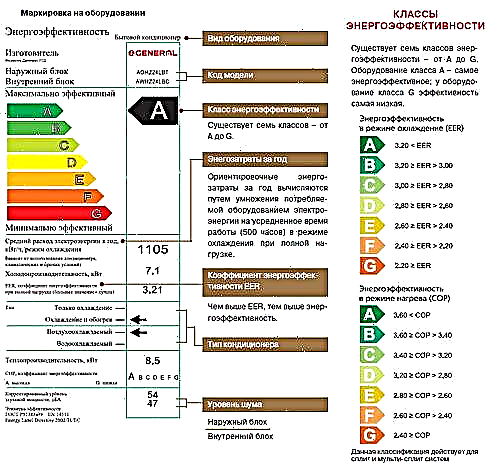
For use in domestic open spaces, models of refrigerators with climate discharge S and SN are better suited
If wider fluctuations in the ambient temperature are observed, it is worth paying attention to models of refrigeration equipment with a dual climate classification
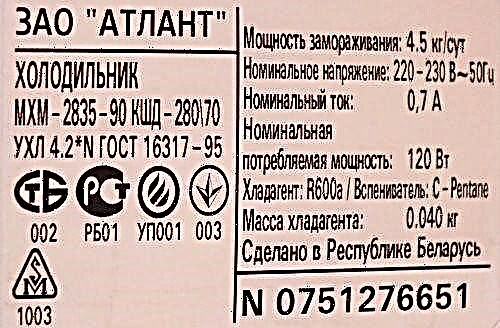
The sn-t discharge is considered the most universal, therefore it is used by the most famous brands of refrigerators and household appliances, such as Samsung, Electrolux or Miele. It provides a temperature range that ranges from +10 to +43 degrees Celsius.
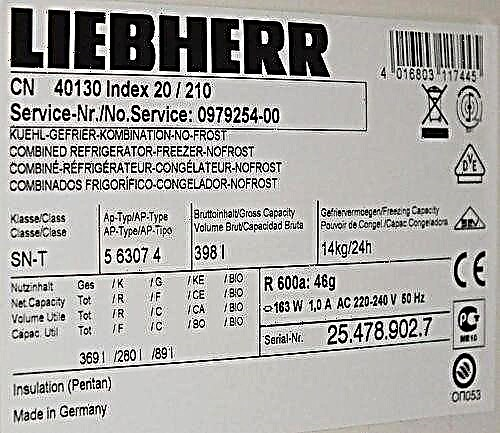
Distinctive features
If sn-n-st-t or sn-st is indicated on the sticker, in front of you is a model of a refrigerator with a double climate discharge. But do not think that firms offer the end user to buy a more versatile device. The bottom line is that such refrigerators have such a unique constructive solution as the presence of an insulating layer. Moreover, its thickness will depend on the width of the range of temperature fluctuations and the hotness of the climate as a whole. In addition, such universal models require more powerful compressors, larger planes of capacitors and the presence of additional venting devices that increase the efficiency of heat transfer.

If it is difficult for you to decide what is the best way to take a refrigerator in terms of climate discharge, you can opt for the universal option, but keep in mind that its cost is several times more than the standard model. In addition, you need to prepare for a solid electricity bill, since universal refrigeration units consume many times more electricity. This leads to a logical conclusion: it is much more advisable to spend time understanding what it is like - the climate class, what is its significance, and then find the refrigerator that will meet the conditions of your home.

Remember that the absence of an adhesive sticker as in the photo with the indicated climatic category is a sign that you have fake and poor-quality goods, the purchase of which will turn out to be problems only.
Types of climate classes
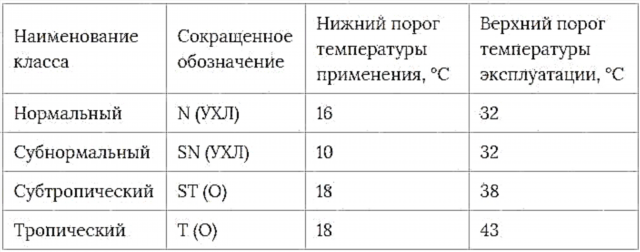
Weather conditions are unpredictable - today it is abnormally hot, and tomorrow the first frosts hit. Such temperature jumps can affect the performance of the refrigerator, so it will be useful to take into account the permissible range.
If the refrigerator suddenly breaks down, then it may not be accepted for repair under warranty, if it turns out that it worked under inappropriate temperature conditions. Each climate class has its own designation and decoding.
N (Normal), in translation from English - normal. The temperature range is from +16 to +32 degrees Celsius. "Universal" and the most bought in Russia models of refrigerators.
In the winter season, on the contrary, the room will have to be heated, otherwise it is likely that the equipment will not turn on at all.
Subnormal - subnormal. The working range is from +10 to +32 degrees. Such refrigerators are placed in rooms where the average temperature is lower than in residential ones: corridors, cellars, loggias, utility rooms.
In this case, if the mark of the thermometer drops below the indicated +10 degrees, this will not affect the operation of the unit.
Subtropical - subtropical. Permissible ambient temperature for these modifications is from +18 to +38 degrees. In refrigerators marked “ST”, the electrical circuits are protected against overheating by insulation. That is, the "stuffing" is not afraid of elevated temperature and humidity.
If the ST class refrigerator is installed in the middle lane, you will have to think over the heating. When the operating temperature drops below +18 degrees, the compressor and thermostat will begin to junk.
Tropical - tropical. The range is from +18 to +43 degrees, mostly dry regions. Due to structural changes, the engines of large equipment do not overheat.
The freezer has also undergone changes - there is more isolation in it, which reduces the melting of ice. Since the electric motor in these refrigerators is an order of magnitude more powerful, the equipment consumes more electricity. Such refrigerators are practically not found in the Russian Federation.
The concept of the climate class of the refrigerator

When thermal and energy calculation of the refrigerator take into account the conditions under which it will work. When choosing a home appliance, you need to know what the climate class of the refrigerator means. In everyday life, the buyer should choose the device according to the room temperature, which means the climatic class of the refrigerator. The temperature range by the engineers is set and taken as a constant value for the thermotechnical calculations of equipment.
Allows you to determine the climate class of refrigerators table.
| Climate class | Climate class features | Temperature range | Delta T chill. and freezer. | Letter designation |
| normal | Middle lane | +16…+32 | 20/43 | N |
| subnormal | continental | +10…+32 | 20/43 | SN |
| subtropical | hot humid climate | +18…+38 | 20/43 | ST |
| tropical | hot | +18…+43 | 25/50 | T |
The reality made for areas with a border climate to calculate and create climatic classes of refrigerators SN-N-ST, N-ST, SN-ST, called "multiclass". Knowing what the Latin letter inside the chamber means, we choose the climatic class of the refrigerator, which is better suited to the operating conditions.
How to choose a class N refrigerator
Foreign models delivered in the middle lane are often labeled N. But if the room temperature rises above +32 degrees, you cannot use such a refrigerator, you will need air conditioning. The climatic class of the refrigerator N is unsuitable in this case. The equipment will work for wear, maintaining the necessary parameters, will soon fail.
In urban apartments in hot summers rarely installed climate equipment. With prolonged heat, the critical temperature level is exceeded. It is more rational to choose the climatic class of the N-ST refrigerator. It will remain operational until +380 C.
Where the climatic class of the SN-ST refrigerator is required
If the apartment is heated late, the temperature drops below the nominal, then the compressor will not turn on. Therefore, the parameters of the climatic class of the refrigerator are selected based on local conditions. It should be borne in mind that each node gain has a cost. Unreasonably choosing a more secure device, the cost rises, ceteris paribus.The climate class of the refrigerator should be improved if it is bought in a cramped room located on the south side with windows.
In warm climates, when the room is not heated for a long time in the fall, refrigerators with the climatic class SN should be chosen. The device is adapted to operate at low temperatures in the external circuit.
Transition classes
In fairness, we note that many manufacturers have changed their minds, and set about producing refrigerators with dual or transitional climatic values. Such models are ideal for regions where the temperature fluctuation in the summer is too large and sometimes exceeds the “average” + 32 ° С. Similar hybrids can be found in the lines of well-known companies:
The idea of combining the climate classes SN and T turned out to be really good, because as a result, refrigerators appeared in our stores that can operate in a wide temperature range of +10 .. + 43 ° С. The reverse side of the coin was the prohibitively high cost of universal models.
That is why you should not immediately run for a transitional class refrigerator in the hope of insuring yourself against any problems in the future. Perhaps, in your conditions, some standard unit will be better able to cope with its task - without an excess supply of operating temperatures. Yes, SN-T hybrid refrigerators are most tolerant of heat and cold, but in the event of any other breakdown, their repair will cost you a lot. Is it worth it to pay extra money for such a problematic technique?
Climate classification of refrigerators
Each modern manufacturer that produces modern refrigerators must indicate the climatic class of the product in the accompanying documentation. If the refrigerator goes out of service due to an incorrectly selected class, service centers have the full legal right to refuse warranty service.
There are several specially designed climatic classes of refrigerators: classes N, SN, ST and T. Class N is represented by units that are designed to operate in normal climatic conditions, at temperatures from 16 to 32 degrees Celsius. It is these aggregates that are most in demand in the middle latitudes with a temperate climate. SN class includes units that are able to work normally at air temperatures from 10 to 32 degrees Celsius
If the ambient temperature can vary in the range from 18 to 36 degrees with a high air humidity indicator, you should pay attention to refrigerators that belong to the climatic class ST. For countries with a hot climate with ambient temperature fluctuations from 18 to 43 degrees, units belonging to the climate class T are produced
Some time ago, the leading manufacturers of household refrigeration equipment began producing refrigerators that have the ability to work in several climatic zones and have a double class: N-ST (16-38 degrees), NT (16-43 degrees), SN-ST (10- 38 degrees), SN-T (10-43 degrees).
Based on the presented new classification of equipment, it can be seen that the most popular equipment is domestic refrigerators, which belong to the SN-T class. These units are the most universal, they are able to work normally in the widest temperature range of the environment.
It is worth noting that the class of household refrigerators or freezers is the indicator that has the same marking in any country in the world. Before introducing a new model of domestic refrigeration equipment to the consumer, the manufacturer carries out comprehensive testing of equipment in conditions that are as close as possible to those in which this unit will subsequently be used. For example, in the Russian Federation, each household refrigeration unit produced must comply with certain parameters that are approved by accepted state standards. The refrigeration units manufactured in Russia, in addition to the standard marking of SN and N classes, also have the UHK marking, which means “moderately cold climate”. Domestic refrigerators made in Russia, designed for use in a tropical climate, are additionally marked with the letter O, which means "general climatic".
It should not be considered that the indication of a double class is the manufacturer’s move, which is aimed at attracting the attention of consumers to their products by the fact that they are supposedly more universal. The fact is that refrigerators with double labeling are fundamentally different in design from units that have one climate class in the labeling
The differences relate to the insulating layer. The wider the temperature range at which the operation of the equipment is allowed, the thicker the insulation layer used in the construction of refrigeration equipment. In addition, double-labeled refrigeration units are also distinguished by the fact that their design uses more powerful compressor units and condensers with an increased evaporation area. In addition, such units can be equipped with additional fans, which increase the efficiency of heat transfer.
It is also worth noting that units with double marking as a rule have a cost much higher than refrigerators with a single marking of the climate class.


